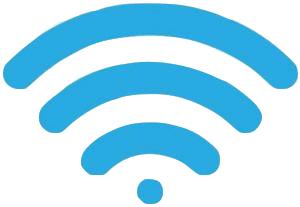
If you’re unable to connect to WiFi, here are some possible fixes for you. They have worked for many people who had trouble connecting to WiFi.
Try these fixes
You don’t have to try them all; just work your way down the list until you find the one that works for you.
- If you’re using a laptop, verify the WiFi switch is toggled on
- Check if the Airplane mode is turned on
- Disable then enable WiFi
- Forget and Re-connect to WiFi
- Update your network adapter driver
- Enable your WLAN AutoConfig service
- Reset TCP/IP
- Run network adapter troubleshooter
- Run System File Checker
- Perform a system restore
Fix 1: If you’re using a laptop, verify the WiFi switch is toggled on
On laptop, there’s usually a switch or button for WiFi connection. If you’ve been unable to use WiFi on your laptop, you should try toggling the WiFi switch on your laptop multiple times to check.
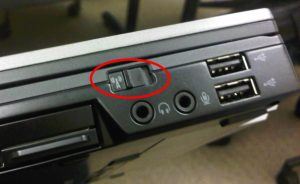
Fix 2: Check if the Airplane mode is turned on
If the Airplane mode is turned on, you may not be able to use WiFi on computer. To check and turn off Airplane mode, you can:
- Click the Start button > Settings.
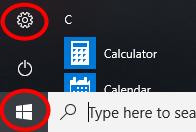
- Click Network & Internet > Airplane mode.
- Turn off Airplane mode, then turn on Wi-Fi.
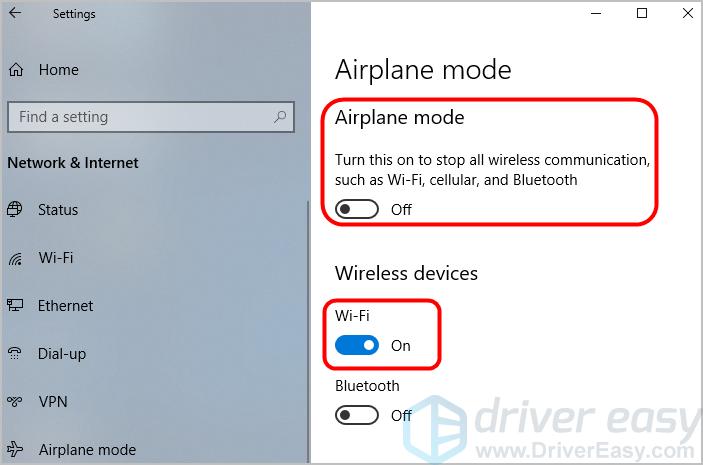
- Check if the problem is resolved. If not, try Fix 3, below.
Fix 3: Disable then enable WiFi
Some users fixed their WiFi issue by disabling and then enabling WiFi on their PC. You can also give it a try:
- Right-click the network icon on the bottom right of your screen, and select Open Network & Internet settings.
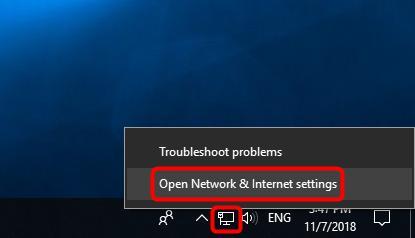
- Click Wi-Fi > Change adapter options.

- Right-click Wi-Fi, and select Disable.
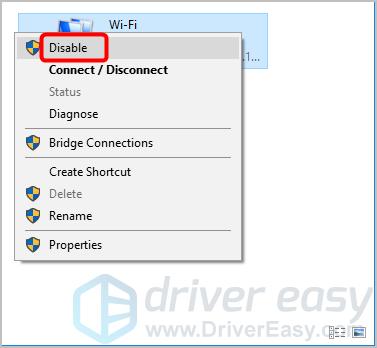
- Wait a moment.
- Right-click Wi-Fi again, and select Enable.

- Check if you’re now able to connect to WiFi. If you are, congrats! If not, try Fix 4, below.
Fix 4: Forget and Re-connect to WiFi
If the settings of a WiFi network are corrupted on your computer, you may not be able to connect to that wireless network. You can try forgetting and re-connecting to that WiFi network to fix the problem.
- Right-click the network icon on your screen’s desktop, then select Open Network & Internet settings.
- Click Wi-Fi > Manage known networks.

- Select the WiFi network you’re unable to connect to, then click Forget.
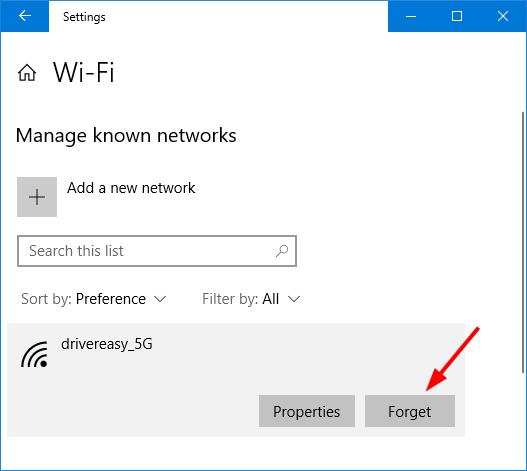
- Try to reconnect to that wireless network and check if the problem is resolved. If not, you may want to reset your modem/router, and then once it is fully loaded again, repeat the above steps. Or you can try Fix 5, below.
Fix 5: Update your network adapter driver
The WiFi not connecting issue may occur if your network adapter driver is not updated properly or not compatible. You can update your network driver to better troubleshoot your WiFi problem.
If you don’t have the time, patience or computer skills to update your network adapter driver manually, you can do it automatically with Driver Easy. You don’t need to know exactly what system your computer is running, you don’t need to risk downloading and installing the wrong driver, and you don’t need to worry about making a mistake when installing. Driver Easy handles it all.
- Download and install Driver Easy.
- Run Driver Easy and click Scan Now. Driver Easy will then scan your computer and detect any problem drivers.

- Click Update next to any flagged devices to automatically download the correct version of their drivers, then you can install them manually. Or click Update All to automatically download and install them all automatically. (This requires the Pro version – you’ll be prompted to upgrade when you click Update All. You get full support and a 30-day money back guarantee.)
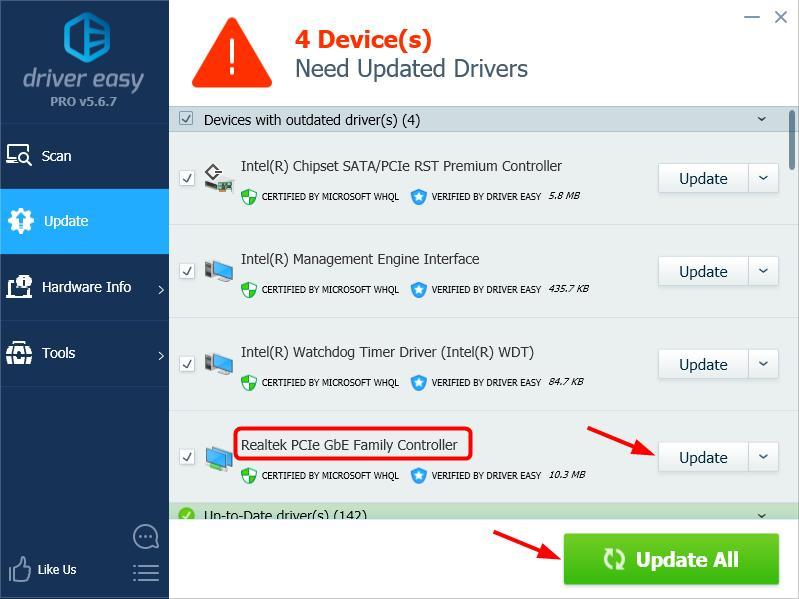
- Once you’ve updated your network adapter driver, check if you can connect to WiFi. If not, you can contact Driver Easy’s support team at support@drivereasy.com for further assistance. They’d be happy to help you. Or you can try Fix 6, below.
Fix 6: Enable your WLAN AutoConfig service
The WLAN AutoConfig service (also referred to Wireless Configuration in Windows XP) configures wireless security and connectivity settings. If the service is disabled, you may have WiFi connection problems. You can follow these steps to enable your WLAN AutoConfig service:
- On your keyboard, press the Windows logo key and R at the same time to invoke the Run box.
- Type services.msc and press Enter.
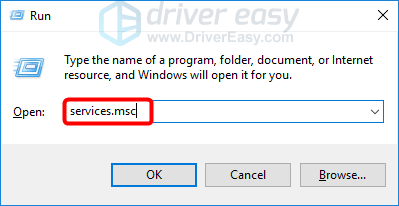
- Scroll down to WLAN AutoConfig, and double click on it.
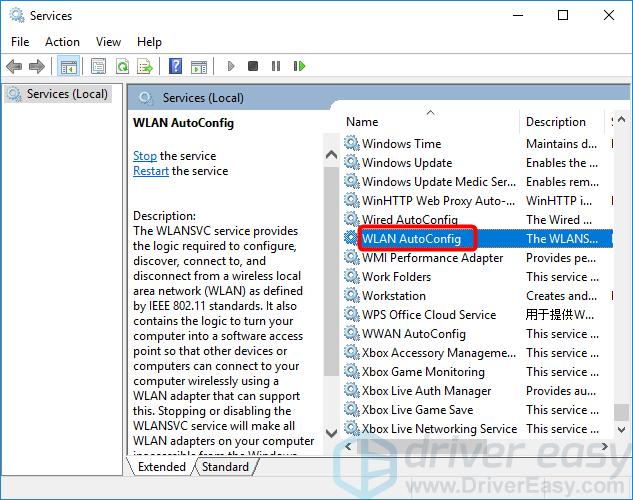
- Set the Startup type to Automatic.
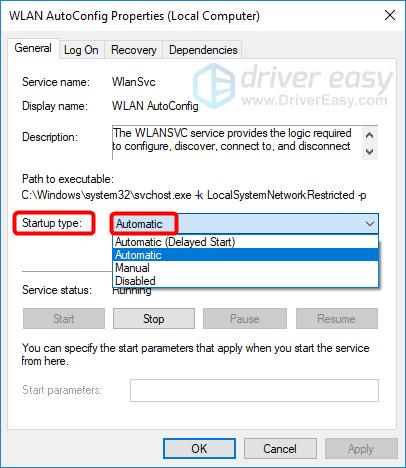
- Click Apply, then OK.
- Check if your WiFi problem is resolved. If not, try Fix 7, below.
Fix 7: Reset TCP/IP
When the TCP/IP stack gets corrupted, you may also not be able to establish a connection to the server and use WiFi. You can take these steps to reset TCP/IP:
- Type cmd in the Windows search box, then right-click Command Prompt and select Run as administrator.
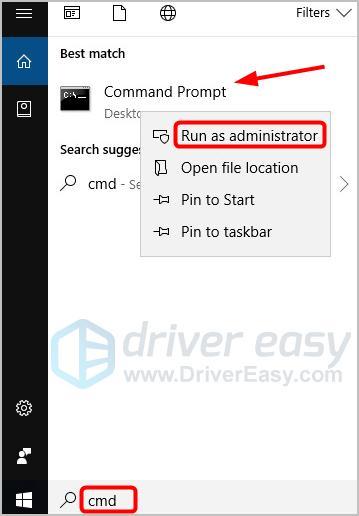
- When prompted for administrator permission, click Yes.

- Type netsh int ip reset c:\resetlog.txt then press Enter.
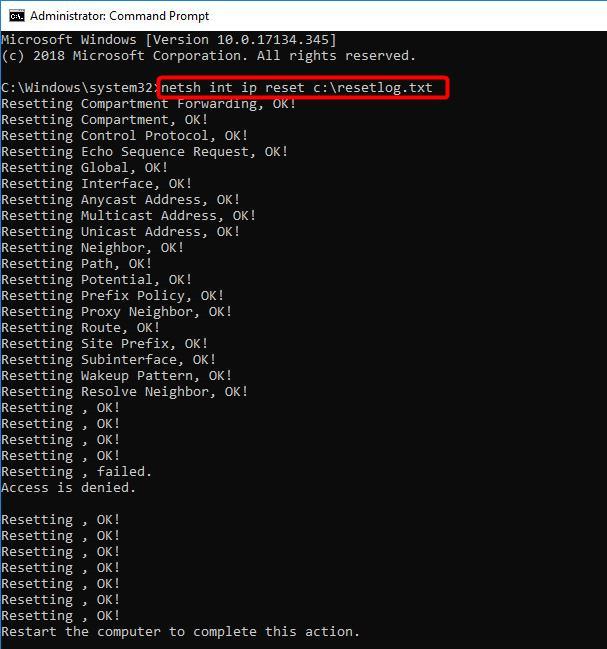
- Restart your computer and check if you’re now able to connect to a WiFi network. If not, move on to Fix 8, below.
Fix 8: Run network adapter troubleshooter
You can also use the handy tool — network adapter troubleshooter — to try fixing your WiFi not connecting problem. You can run the network adapter troubleshooter by following these steps:
- Type troubleshoot in the search box and press Enter.
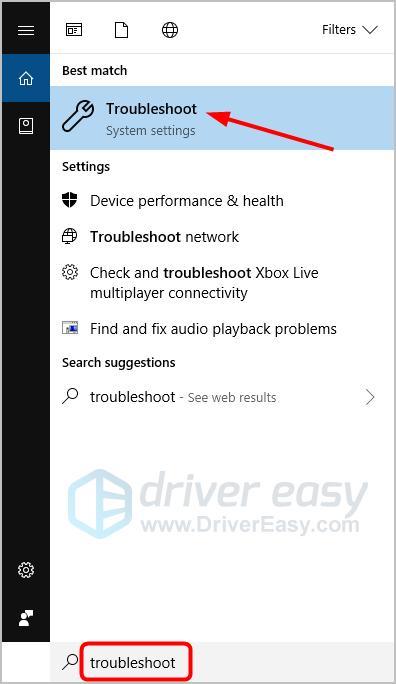
- Click Internet Connections, then click Run the troubleshooter.
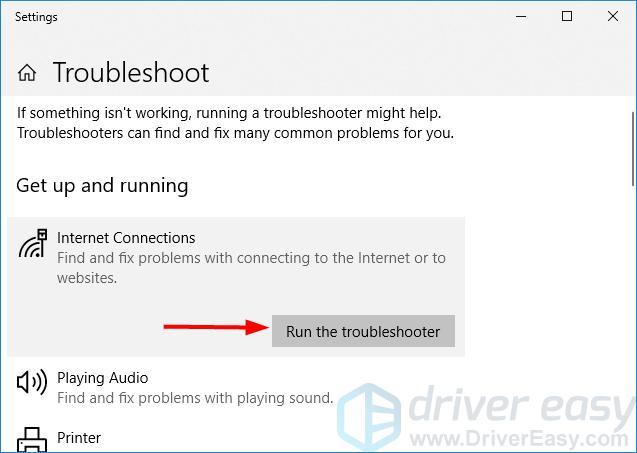
- Click Network Adapter, then click Run the troubleshooter.
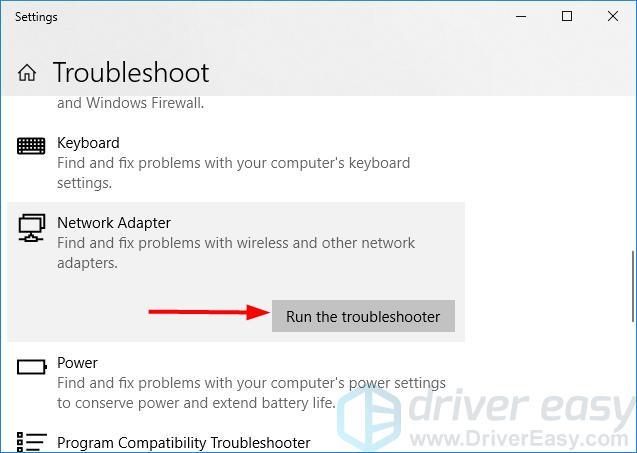
- Check to see if your WiFi problem is fixed. If not, try Fix 9, below.
Fix 9: Run System File Checker
The issue might also be caused by system file corruption. You can run System File Checker and check if there’re any system files missing or corrupted. If there are any, the sfc/scannow command (System File Checker) will repair them.
Here’s how to run System File Checker to troubleshoot your WiFi not connecting problem:
- Type cmd in the Windows search box,
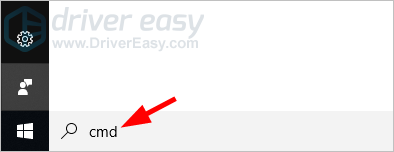
- From the results, right-click Command Prompt, and select Run as administrator.
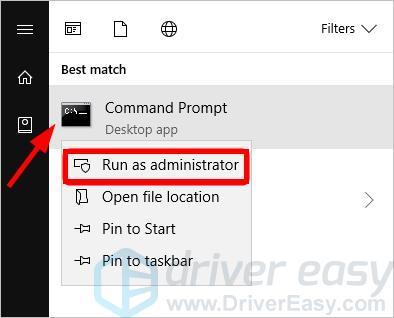
- At Command Prompt, type sfc /scannow and press Enter.
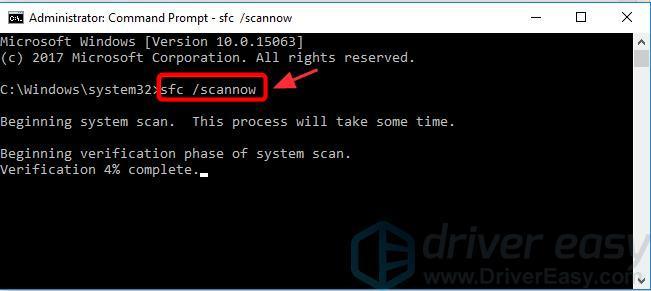
- It should begin running a system scan, and will take some time. When it finishes, restart your computer and check if it has fixed your WiFi problem. If not, move on to Fix 10.
Fix 10: Perform a system restore
If the steps above didn’t work for you and your WiFi not connecting issue only occurs recently, we recommend performing a system restore on your computer. It’ll return your system files and settings to an earlier point in time without affecting your personal files.
Here’s how to perform a system restore:
- Type recovery in the Windows search box, then press Enter.
- At Recovery, click Open System Restore.
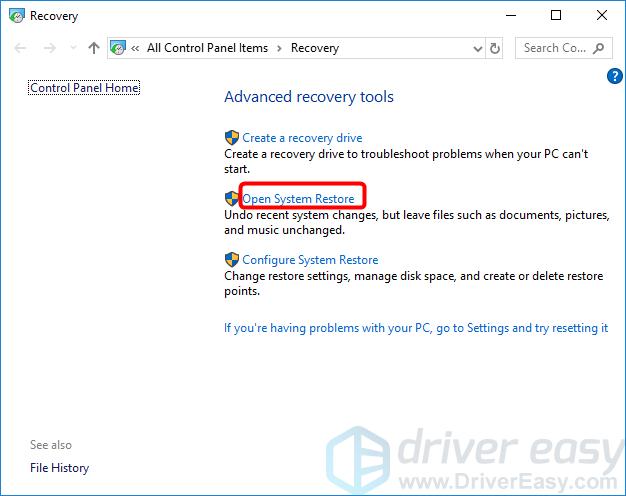
- Select Choose a different restore point, and click Next.
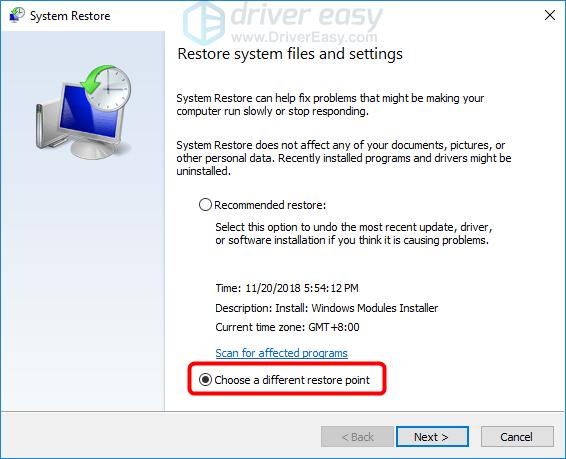
- Check the box beside Show more restore points. You should see a list of ‘restore points’. These are like backups of your computer, as it was at that particular date and time. Think back to a date when you were able to connect to WiFi, and select a restore point from that date or slightly earlier (but no later).
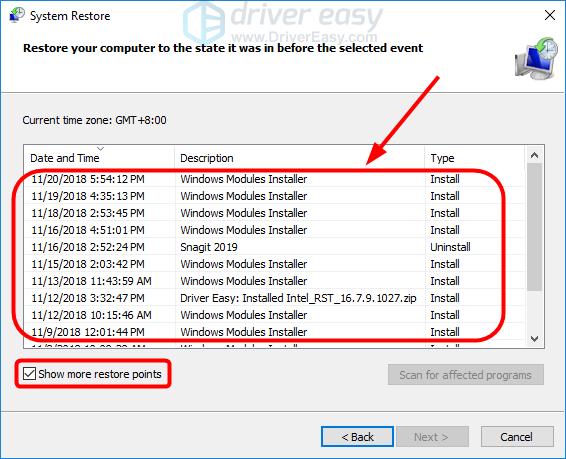
- Click Next > Finish.
- Check to see if you’re now able to connect to WiFi.
After trying all of the above fixes, are you now able to use WiFi on your computer? If not, don’t give up hope. Out IT specialists will help you fix it for free, if you buy Driver Easy. Plus you get a super-easy way to automatically update all your drivers, and keep your computer in tip-top shape.
Either way, as always, you’re more than welcome to leave a comment below to share your results or any other suggestions.





